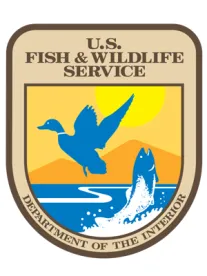The debate over federal protections for the Sage-Grouse species we discussed in “FWS Announces ESA Protection for the Gunnison Sage-Grouse” continued this month with the passage of the FY15 appropriations bill, which includes a rider prohibiting the United States Fish and Wildlife Service (FWS) from using the Department of the Interior’s funding to issue new rules concerning the birds. Introduced by Rep. Mark Amodei (R-Nev.), the rider provides that “[n]one of the funds made available by this or any other Act may be used by the Secretary of the Interior to write or issue [pursuant to the Endangered Species Act (ESA)]—(1) a proposed rule for greater sage-grouse (Centrocercus urophasianus); (2) a proposed rule for the Columbia basin distinct population segment of greater sage-grouse; (3) a final rule for the bi-state distinct population segment of greater sage-grouse; or (4) a final rule for Gunnison sage-grouse (Centrocercus minimus).”[1]
The rider, which was championed by grazing, mining, and oil and gas interests, effectively bars FWS from proposing ESA protections for the Greater Sage-Grouse, a bird whose habitat spans several western states with developing conventional and nonconventional energy sectors.[2] The Gunnison Sage-Grouse, a related species, was listed as threatened on November 12, 2014, and although the rider does not alter that determination, it does prevent FWS from amending the listing in response to new developments. Because the birds’ habitat ranges across several western states that are considered to be prime locations for oil, gas, and coal extraction, as well as wind, solar, and transmission line projects, FWS’s inability to list the Greater Sage-Grouse under ESA or to issue new rules concerning the Gunnison variant is a welcome development for many in the energy sector.
The rider will, however, also have the unintended effect of preventing FWS from issuing a 4(d) rule intended to relax protections for the Gunnison Sage-Grouse in Gunnison County, Colorado, where it had planned to ease restrictions due to local progress in conserving the species.[3] According to FWS, the rider “prevents the Service from finalizing a rule that would provide certainty to landowners, giving them assurance that they can continue economic activities compatible with the conservation of the species, such as properly managed livestock and ranching activities.”[4] Secretary of the Interior Sally Jewell likewise expressed disappointment in the rider, noting that some Congressmen are “more interested in political posturing than finding solutions to conserve the sagebrush landscape . . . [r]ather than helping the communities they profess to benefit, these members will only create uncertainty, encourage conflict and undermine the unprecedented progress that is happening throughout the West.”[5]
But even as the likelihood of ESA protection for the Greater Sage-Grouse wanes, the Bureau of Land Management (BLM) is revising approximately 100 land-use plans covering millions of acres in states where the bird is indigenous. ESA-related funding restrictions notwithstanding, BLM’s land-use plans could bolster Greater Sage-Grouse populations by limiting oil and gas development and requiring developers to establish buffer zones around the bird’s breeding grounds. BLM’s proposed land-use plans in Utah, for example, include a 4-mile buffer around new oil and gas projects, while draft plans in Oregon would discourage development throughout approximately 5 million acres of “focal” Sage-Grouse habitat.[6]
The contentious Sage-Grouse rider is one of several controversial environmental provisions in the spending bill, and is among the first of many appropriation riders that can be expected as the Republican Congress works with the Obama administration in the coming years.
[1] Consolidated and Further Continuing Appropriations Act, 2015, H.R. 83, 113th Cong. § 122 (2014), available at http://www.gpo.gov/fdsys/pkg/BILLS-113hr83enr/pdf/BILLS-113hr83enr.pdf.
[2] See Alex Guillén & Elana Schor, Bye-bye, birdie, Dec. 10, 2014, available athttp://www.politico.com/story/2014/12/sage-grouse-spending-bill-endangered-species-protection-113483.html; Phil Taylor, Sage grouse rider — what it all means, Dec. 12, 2014, available athttp://www.eenews.net/greenwire/stories/1060010499.
[3] Mark K. Matthews, A federal budget bill has added more confusion to sage grouse fight, Dec. 22, 2014, available athttp://www.denverpost.com/news/ci_27184703/federal-budget-bill-has-added-more-confusion-sage.
[4] FWS, Statement by Interior Secretary Sally Jewell on the Sage-Grouse Rider in the FY15 Omnibus Bill, Dec. 17, 2014, available at http://www.fws.gov/news/ShowNews.cfm?
[5] Id.
[6] Taylor, supra note 2.




 />i
/>i

